I've been having a lot of fun working with my stash of hackberries. As I mentioned in my intro post on hackberries, there's a number of things you can make with them, but hackberry milk is one of the most versatile.
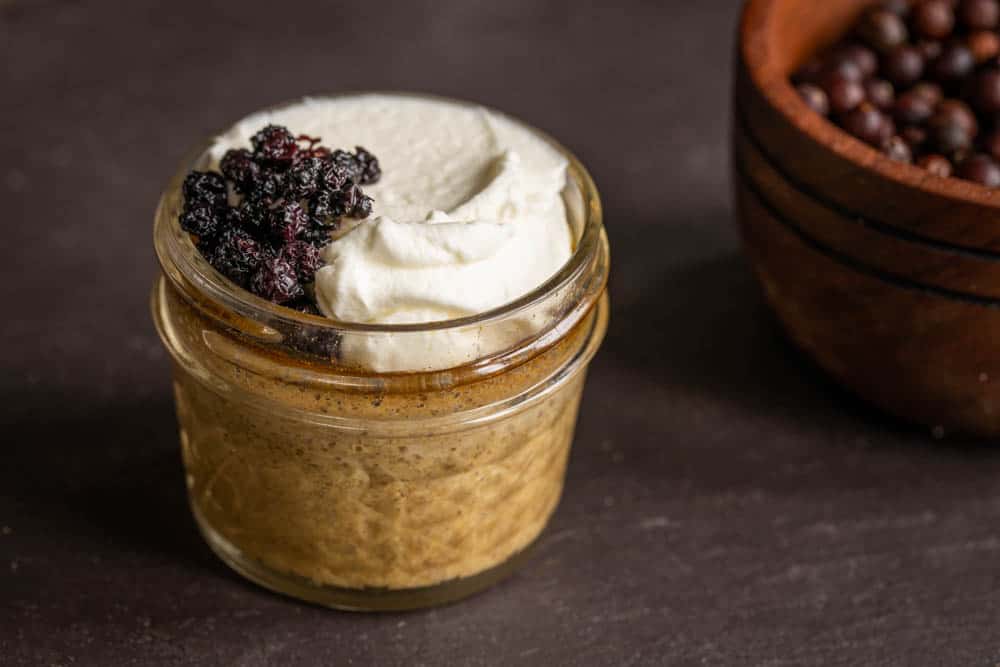
Besides drinking the milk (it tastes reminiscent of squash) you can also use the finished product in cooking and baking. A hackberry bonet pudding is arguably the best thing I've made with them yet.
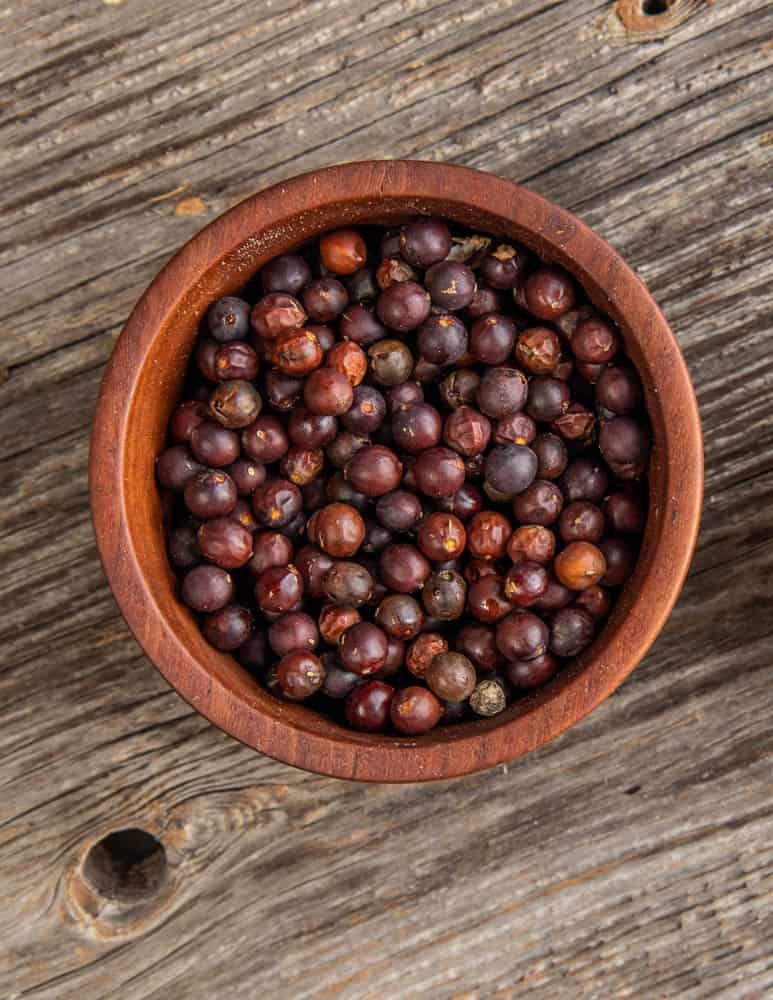
Hackberry milk is delicious, but it will still have little tiny bits of seed here and there, that will give baked goods a bit of texture you'll notice. My recipe for hackberry milk, and more specifically not pressing the milk through a strainer removes most of the seed, but there will still be some.
In dreaming up how I could mask the seed texture a bit (it's not unpleasant) I remembered one of my favorite Italian custard recipes that I used to make from Gina DePalma's book Dolce Italiano. If you're not familiar, her book was the sweet counterpart to the legendary Babbo cookbook by the now canceled Mario Batali. However you feel about Mario, his books still stand as shining examples of fine cooking in my world. Dolce Italiano is no exception, and is a treasure trove of obscure and interesting Italian desserts.
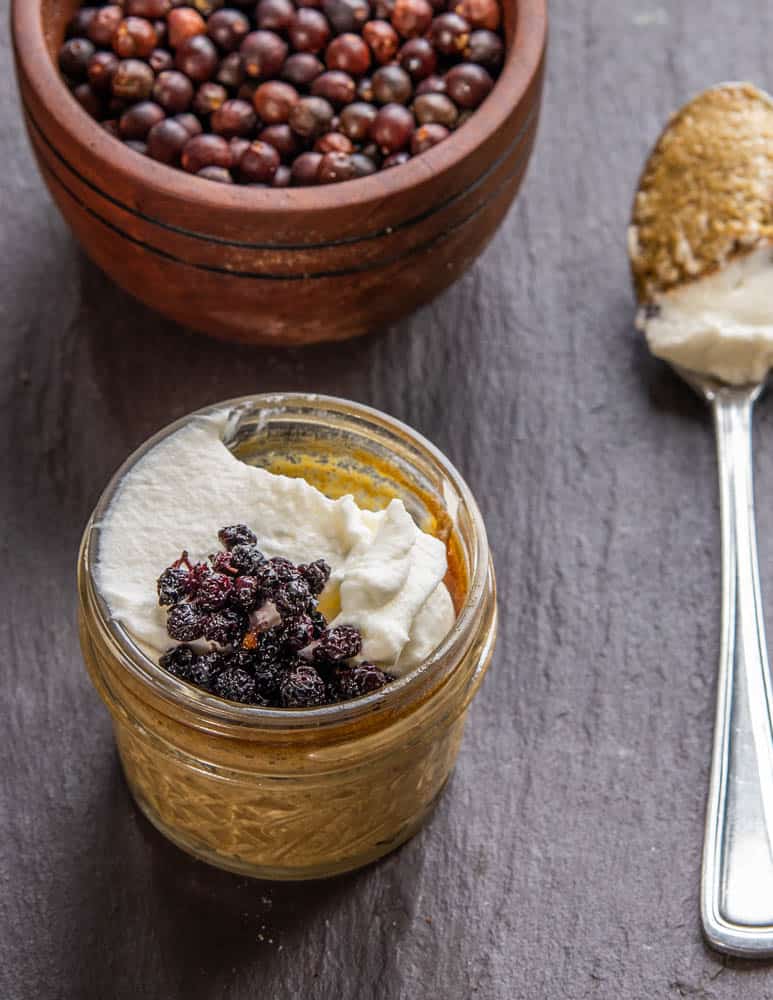
What's a bonet?
A bonet, as explained by DePalma, is a sort of custard from Piedmont, a bit like a pot du creme. The bonet differs from a typical baked pudding in one big way though: before baking, crushed amaretti cookies are sprinkled into the ramekins, which, while baking, get hydrated by the custard, but also sink down to the bottom, giving the finished pudding a sort of subtle, tender cake-like bottom.
I knew that adding some crushed amaretti might be just the thing to add to a custard made with hackberry milk, since from experiments with them already I knew that the leftover seeds from the hackberry would also sink to the bottom of the custard as it baked.
Mingling with the seeds, the amaretti add the perfect amount of texture to compliment the hackberry, as well as disguise the texture of the seeds a bit for the uninitiated. Try it if you're making some hackberry milk.
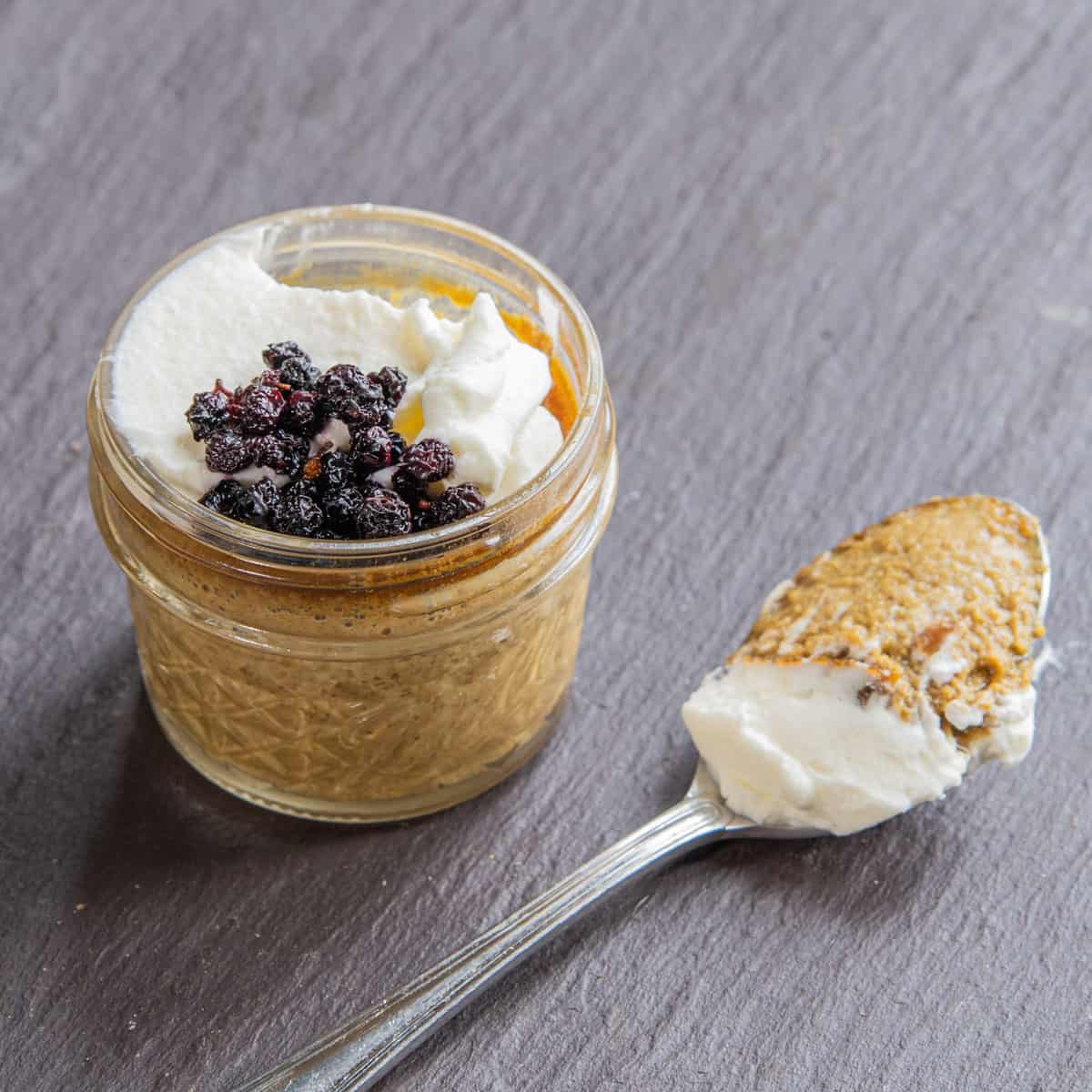
Hackberry Bonet Pudding
Equipment
- 4 4 oz jelly jars or similar, adjust the cooking time if you use larger vessels.
Ingredients
- ¾ cup hackberries
- 2 ¼ cups water
- 3 egg yolks
- Pinch cinnamon
- 2 tablespoons unsalted butter
- ¼ cup maple sugar or brown sugar
- ½ teaspoon Galium extract or vanilla extract
- 3 tablespoons ginger cookie crumbs crushed amaretti cookies or unseasoned breadcrumbs (any of these are fine, just don’t skip it)
Instructions
Make the hackberry milk
- Toast the hackberries on the stove for a few minutes, but don’t burn them add the water to the pan and bring to a boil, then pour into a blender and, carefully, making sure there’s a vent in the top to prevent the lid from blowing off, blend the berries and water on medium-then medium-high, and then high, lasting for about 45 seconds.
- Strain the hot milk through a fine strainer or a nut bag or cheesecloth, squeezing out the excess when you can handle it. If you use a strainer, do not press the solids through or you will get too much of the crunchy seeds.
- Measure the nutmilk, you should have 12 oz.
Build the custard
- Heat the butter, cinnamon and maple or brown sugar until melted and sizzling, allowing it to cook and sizzle a bit to cook off moisture before adding the nutmilk. Add the nutmilk, whisk to combine and cool until 90F (or room temp) then add the eggs and extract and puree with a handblender or in a blender.
Baking
- Stir the cookie crumbs or bread crumbs into the custard then pour into 4 four-ounce ramekins or jelly jars and put in a baking pan with high sides. Fill the pan with hot, but not boiling water halfway up the custards, then bake, uncovered, for 30 minutes.
- After 30 minutes, turn the heat of the oven off, open the door to let some heat out, count to five, then close the door and allow the custards to cool in the oven until room temperature.
Serving
- Remove the cooked custards, wipe the bottoms clean, screw on lids or wrap in cling film and refrigerate until needed. Allow to come to room temperature before serving. Garnish with whipped cream, stewed berries, and toasted, freshly cracked nuts. The custards will last for 4 days in the fridge.

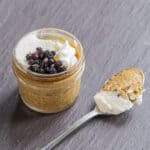
Kelly Fischer
This was so delicious and super fun to make! We used bread crumbs to really let the hackberry flavor shine through. We're excited to make it again and again. Thank you, Alan!!
Alan Bergo
Thanks Kelly. I really like how it turns the milk into a legit dessert. Easy to play around with too, and I bet the breadcrumbs really gave it a nice, clean flavor.
Sheri R McMahon
I have several hackberry trees along my property line, only learned what the trees were when I had a friend do tree trimming. So these are the things that hurt when you walk on them barefoot! Also, sometimes when I'm outside in the lawn chair, I get hit by hackberries knocked off by squirrels high up in the trees. My dog loves the berries. I thought she was eating rabbit turds, but realized what she was crunching was the berries. She's wander all over eating them one at a time.
Alan Bergo
Funny to hear dogs will eat them!
Yoni Katz
This is very funny to hear. My dog who doesn't eat any raw fruit loves hackberries and even crunches up the seeds like I do. I guess dogs like hackberries.